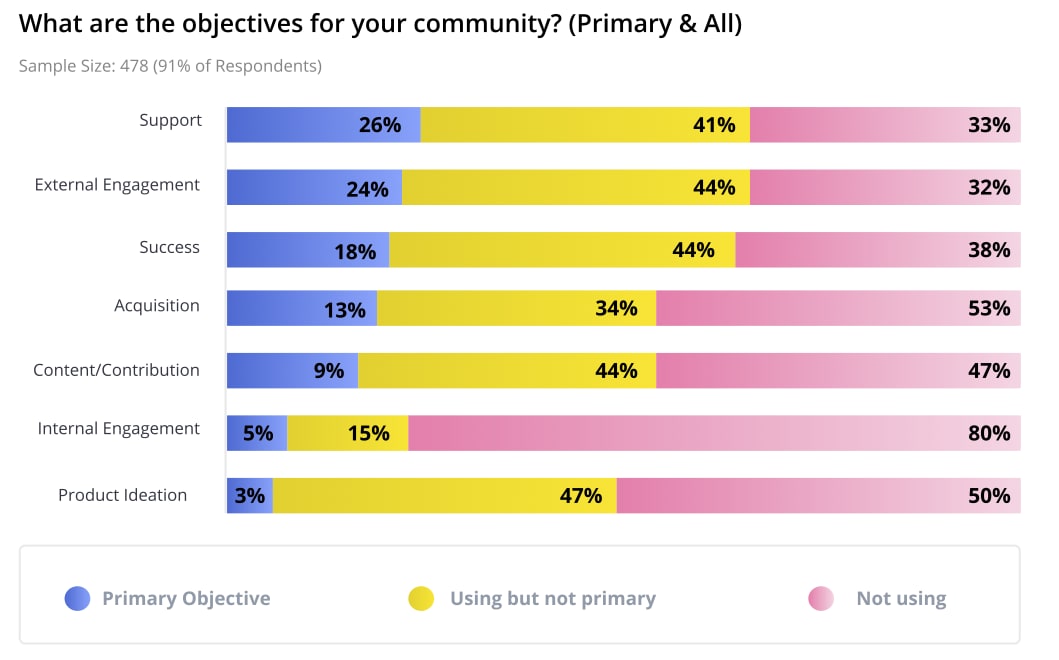Community Management: A 2024 Guide to Building a Home for Your Tribe
Create a safe, welcoming environment to foster community for your consumers. Learn the essentials of effective community management.
 August 23, 2023
August 23, 2023 9 minute reading
9 minute reading
Community management is a crucial component of any public relations or marketing strategy. It builds an identity around your brand, which is necessary in a high-competition digital landscape.
Ninety-four percent of consumers say a brand’s treatment of its customers influences their buying decision. Make that treatment a positive one and form intimate relationships with customers through superb community management.
What is community management?
Community management involves creating a safe, inviting, and engaging environment for consumers to interact with each other and your brand. It’s not limited to a single space either—communities can exist everywhere from social media platforms like TikTok or LinkedIn to other areas like Discord or online forums.
Managing your brand’s community can build a loyal consumer base with a sense of belonging. Cultivating a successful online community in 2023 requires a community management strategy.
Like setting up a social media marketing plan and developing metrics for success—such as brand awareness or customer support.
In some ways, online communities have taken priority over in-person memberships. Small business owners are capitalizing on this by creating a space for like-minded consumers to connect in the digital realm.
Community management can benefit your business by:
Increasing lead generation and customer retention
Forging a personal connection with customers
Receiving valuable feedback
Increasing revenue by attracting new customers
Cultivating a fantastic customer experience
Engaging with consumers and learn more about what they want
Finding brand ambassadors
Receiving more user-generated content
Increasing engagement
Take your online community wherever your target audience spends time. Define how you want to represent your brand—keep in mind consumers prefer reliable communities.
“I think one of the things so many companies get wrong is setting up a digital space and thinking that is the community,” says Ryan Rumsey, founder of Chief Design Officer School. “Communities are the interactions, the conversations, the vulnerabilities, and sharing that take place, not the tool. And while tools can be set up and managed pretty easily these days, that’s not going to be a difference maker.
Hire a professional community manager on Fiverr
What’s the difference between social media management and community management?
Social media and community may sound like interchangeable terms—but that isn’t always the case. Your community doesn’t need to exist on a social media platform. And the purpose of every social media account isn’t to instill a sense of community.
Social media managers are more concerned with content creation and curation. A social media manager might be tasked with:
Scheduling social posts
Implementing the best hashtags
Juggling accounts on various apps
Monitoring all social media platforms
Interacting as the brand itself
Creating new content
On the other hand, community managers prioritize:
Responding to customer messages
Moderating spaces
Forming more personal relationships
Finding ways to foster connection
Strategizing community growth

6 different types of community management
When thinking about community management, the SPACES model developed by CMX is a useful tool. Businesses are buying into the concept of virtual communities, with 86% of businesses saying community is critical to their company’s mission.
1. Support communities
Communities centered around customer support are valuable spaces where consumers can help each other out. These communities allow common customer support questions to be tackled by users rather than brands.

GoDaddy is an example of a great, dedicated support community.
2. Product communities
Listening to customer feedback about product ideation and design helps to develop appealing products for your target audience. It also creates a personal relationship between customers and your brand because they see their voices matter.
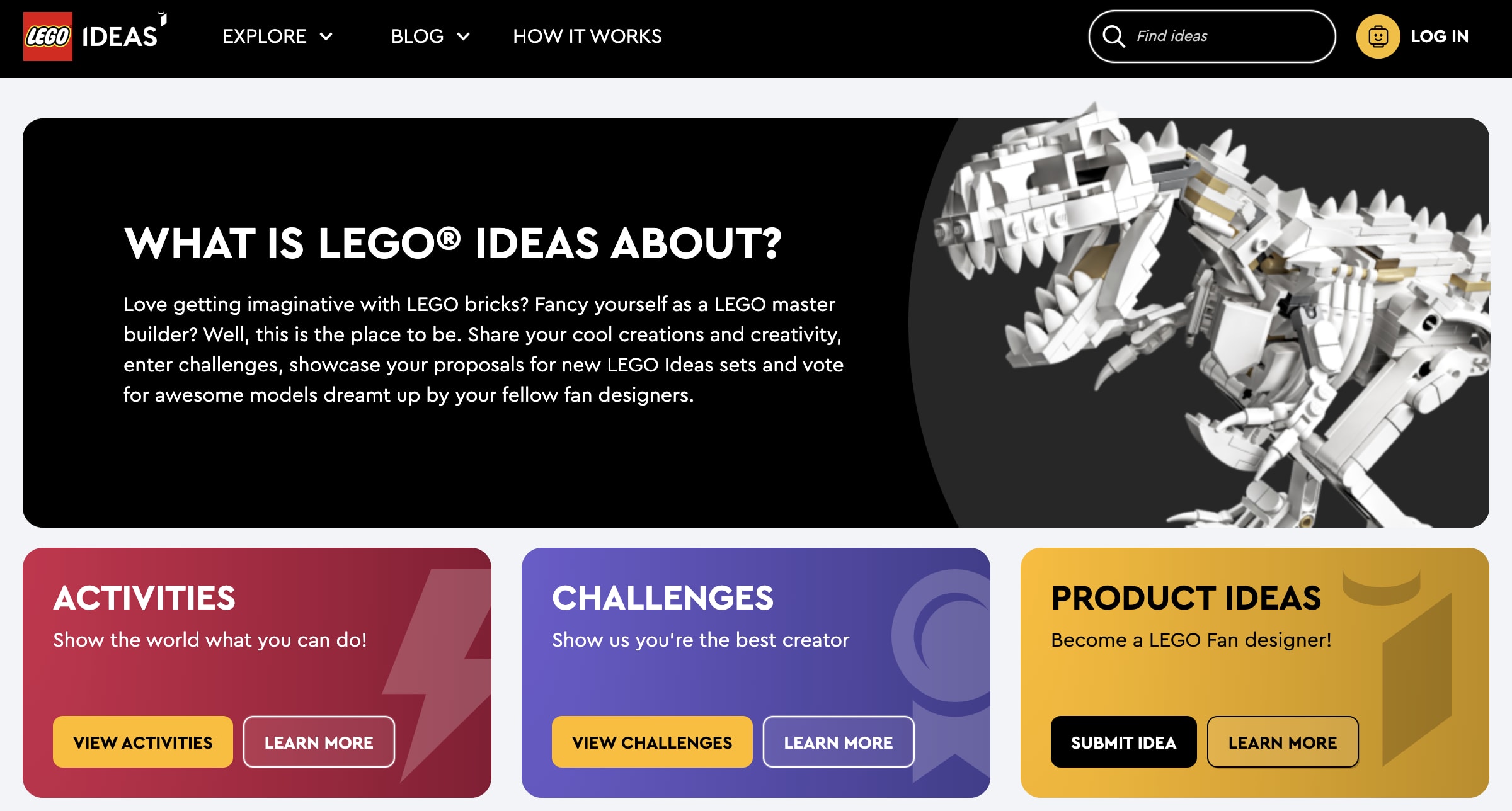
Lego created a space for their loyal fan base to get involved with product development.
3. Acquisition and advocacy communities
Many businesses already have loyal customers who aren’t afraid to shout their support from the rooftops—50% of consumers tell their friends about their favorite brands. Empower your brand advocates by setting up a space for them to better spread brand awareness. Consumers trust other shoppers more than brands, so setting up an advocacy community can be as successful (and more cost-effective) as influencer marketing.

Lululemon runs a successful ambassador program.
4. Content and contribution communities
Sometimes, content marketing is as easy as creating a platform for users to share their content. Communities centered around content and contribution are ideal for consumers looking for resources, ideas, and initiatives. These communities usually require a management team to vet certain things, otherwise, the community usually manages itself.
Check out our top B2B content marketing ideas for inspiration.
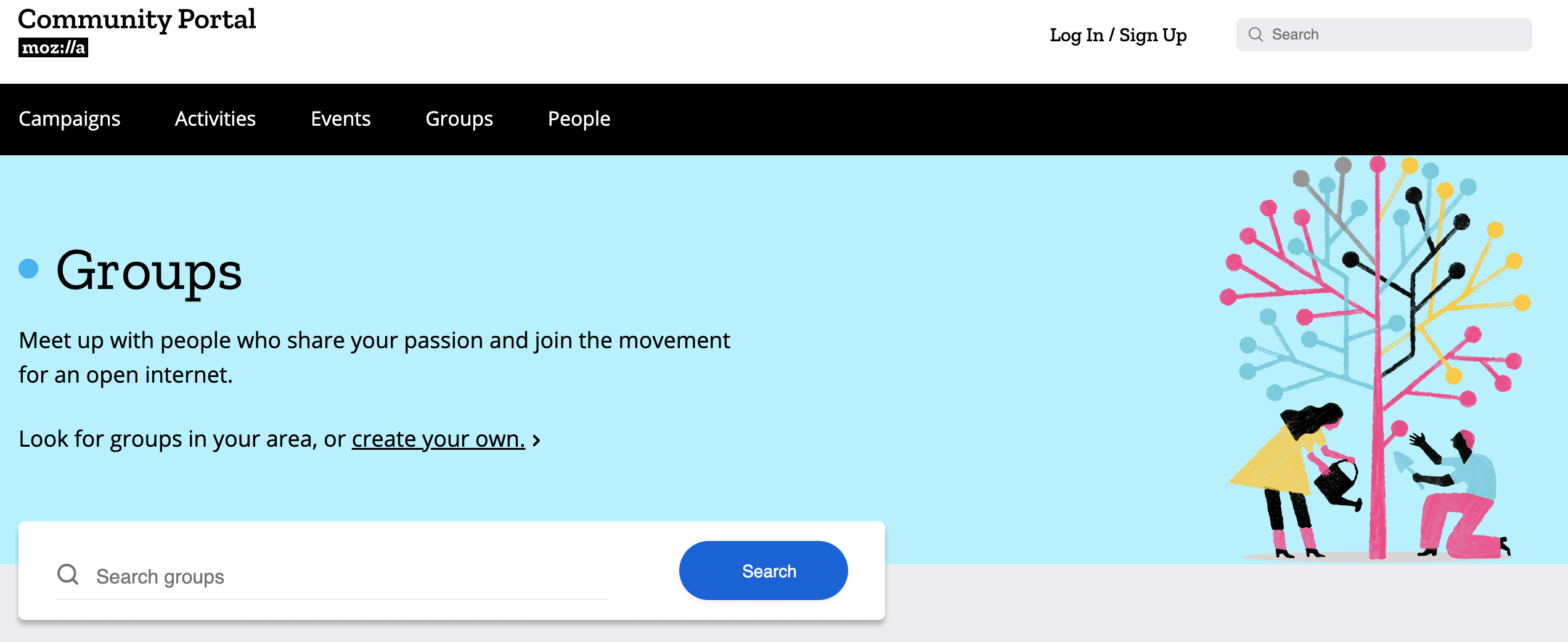
Mozilla has a community that makes it easy for consumers to connect and share ideas.
5. Engagement communities
Communities don’t have to be entirely based around your products, services, or brand. Successful communities often pop up when brands curate a space for consumers to discuss common interests in the industry. A brand offering a space for users with similar interests to connect can strengthen brand awareness and build a loyal consumer base.
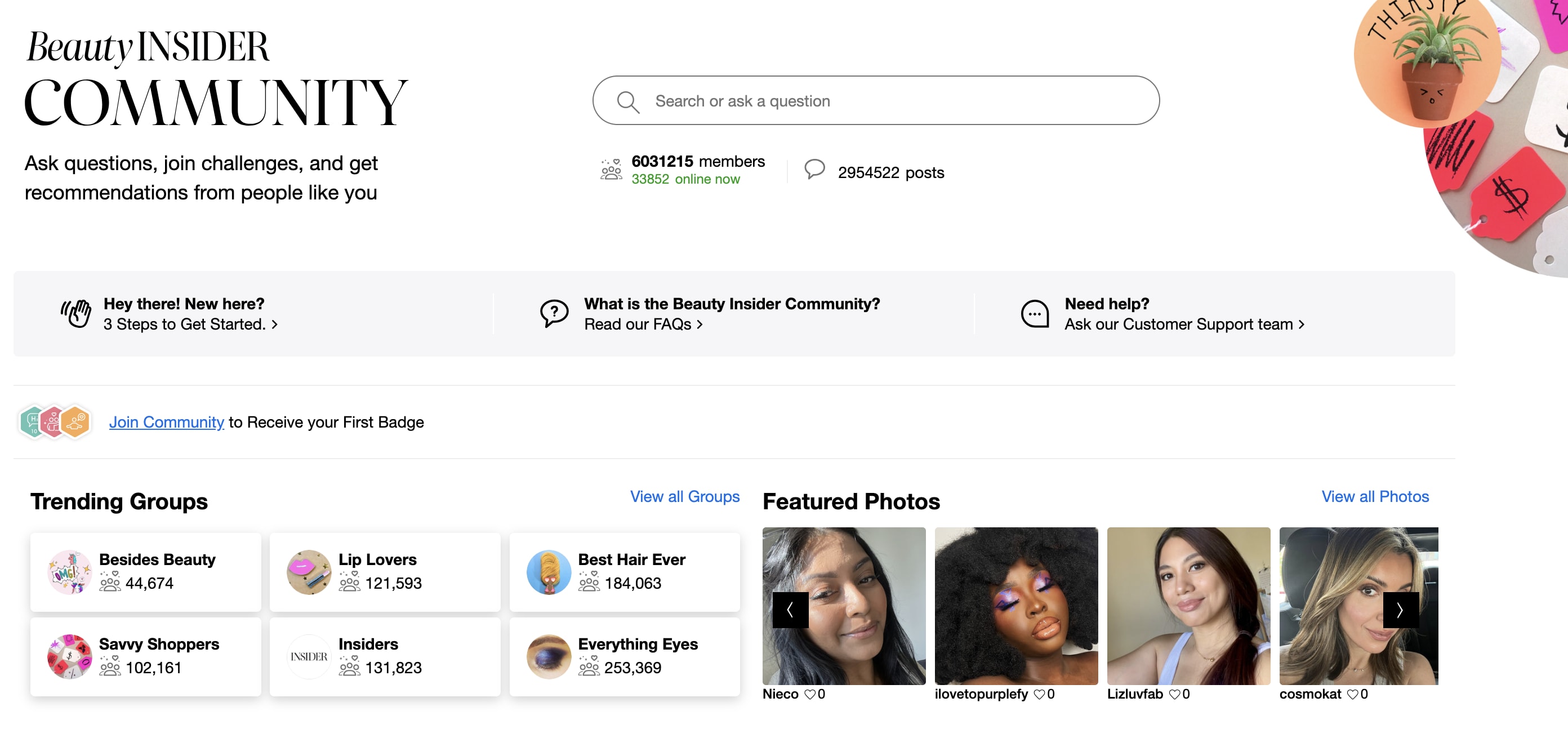
Sephora’s Beauty Insider Community is a space for consumers to discuss everything beauty-related—not just Sephora-related.
6. Success communities
If a support community was effective, then consider starting a success community. Success communities go beyond answering customer questions by encouraging users to share tips, advice, best practices, upskill ideas, and more.
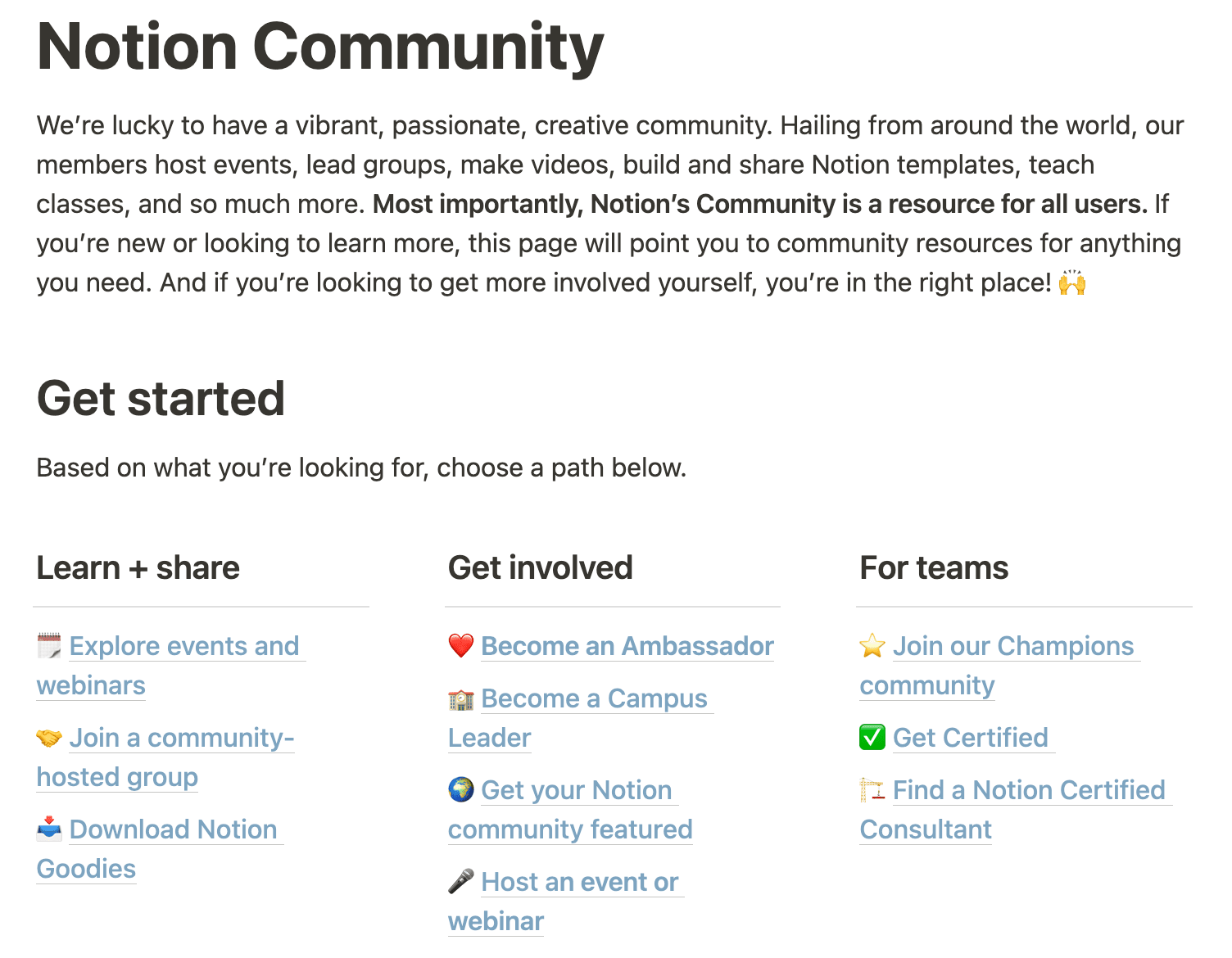
Notion is an example of an effective success community offering a variety of ways to connect and get involved.
Hire a talented community strategist for your business
How to build a community management strategy
Building a community management strategy is essential for all businesses looking to cement a brand identity that’s memorable in 2023. Whether it’s for an online forum, a homeowners association (HOA), or a social media channel, the right strategy can help create an active and engaged community that supports your business goals.
Here are tips to get started.
Develop and execute goals
Define the objectives of your community and formulate strategies around those objectives. Think back to the SPACES model and pick one type of community to focus on first. Once these marketing strategies are in place, refine them regularly to meet changing customer needs and expectations.
Then, decide where you’ll host your community:
Create engaging content
The quality and quantity of content plays a critical role in successful community management. Curate compelling, entertaining, interesting, and valuable social content that’s relevant to the target audience’s demographics. It’s also important to optimize content for SEO so it ranks in search engines and brings traffic.
Examples of engaging content include:
Blog posts with engaging visuals, data, and quotes
Videos that highlight product uses or repurpose blog post content
Podcasts that discuss relevant industry news or company updates
Infographics with actionable checklists
Webinars that feature industry leaders
Testimonials from loyal customers
Moderate interactions
As your community grows, invest time into monitoring interactions between community members. Many small businesses hire a freelance community manager at this stage.
Otherwise, you must respond promptly to feedback from customers and moderate hostile or inappropriate conversations. Also, consider implementing a code of conduct outlining expected member behavior. It’s okay to take a hands-off approach focusing more on moderation than interaction, as this encourages other community members to interact with one another, rather than wait for the “expert” to jump in.
“Running a supportive community is knowing that encouraging others to answer has longer-term benefits that outweigh the short-term single answer,” says Rumsey. “When members hear from more than one person, they get a rich variety of perspectives to learn from.”
Analyze metrics
Review your analytics to measure your performance against your goals. Identify areas for improvement and track progress toward achieving your strategy's goals. If things go awry, adjust and optimize your social media strategy.
Consider analyzing your metrics with:
Social listening tools
Surveys from users
Engagement rates from community members
Engage with members regularly
Engage with your members at least weekly to develop a strong community and long-term relationships.
For example, participate in conversations, answer customer questions, and show gratitude towards customers to create a feeling of belonging—which ultimately leads to improved loyalty.
Engage with members through methods, such as:
Direct messages on social media
Polls
Surveys
Q&As
Live streams

Tips to grow your community
Setting up and managing a community is the beginning of building a virtual home for your tribe. If you want to grow your business and increase brand awareness, invest in the growth of your community.
Here are a few tips to grow your brand’s digital community:
Understand your audience. Get to know your users and their interests to tailor your content to them.
Promote content. Share content from your community across other social media channels and platforms to increase visibility.
Use visuals. Use videos, infographics, images, and other visuals to make your content stand out and more engaging.
Respond quickly. Make sure to respond to comments and messages in a timely manner to show you care and are attentive.
Invite feedback. Ask questions and invite feedback to get to know your users better and keep them engaged.
Host events. Host online events to engage with your community, hear what they have to say, and give something back.
Set goals. Set goals for yourself and your team members to keep track of progress and measure success.
Invest in SEO. Optimize your content for search so more users can find your site and community.
Leverage influencers. Work with influencers in your niche to promote your community.
Connect with other communities. Connecting with other communities can foster collaboration and support.
Celebrate accomplishments. Celebrating the accomplishments of members can build morale and boost pride in the community.
Upgrade your hosting platform. Using a free version or lower pricing tier of Slack or other software is ideal when starting out. But as you grow, you'll need a platform provider with more functionality to match the needs of a larger community and to make management easier.
Connect your community and social strategies. Make sure your community management strategy and your social media marketing strategy are closely intertwined.
Promote community growth. Forge personal connections to increase the size of your community and reach new consumers while generating additional revenue.
While a smaller community might be more manageable, a larger community means a larger consumer base to pull valuable insights from. You can learn a lot from the conversations in your community. Pay attention to what users are asking, interested in, and confused about. Community management isn't only about keeping a community happy and running well—it's about learning from your community while giving them the space to learn from one another.
“There’s a lot of great anecdotal research that can be done by observing topical themes, questions, solutions, etc., by maintaining a community,” adds Rumsey.
Build a home for your tribe with a freelance community manager
The larger your community becomes, the more you need strategic community management. Small business owners may struggle to balance running a business, maintaining an online presence, and moderating a community.
You’re not supposed to do everything on your own.
Fiverr Freelancers can perform various community management services, such as growth, social listening, and management and engagement by freelance community managers on Fiverr.
Join Fiverr today to get professional help with building and maintaining your online community.
